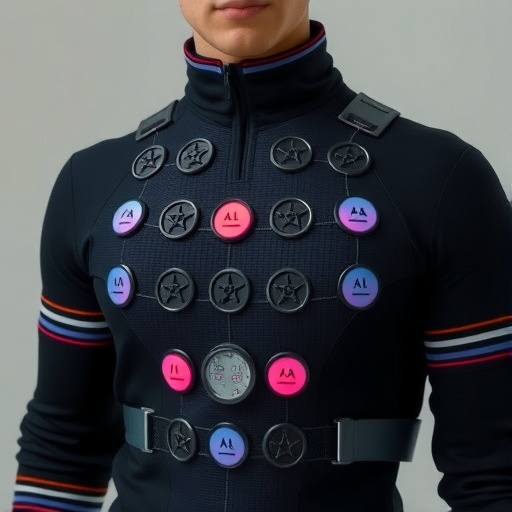Soft robotics is carving a niche in the rapidly evolving landscape of wearable technology, promising not just comfort and adaptability but revolutionary implications for health care, rehabilitation, and human-computer interaction. This burgeoning field harnesses the unique properties of soft materials to create robots that are safer and more comfortable for users, especially in wearable applications. With their inherent flexibility and mechanical responsiveness, soft robotic systems can provide a level of assistance and stimulation that traditional rigid devices simply cannot match.
In recent years, the use of soft robotics in rehabilitation has gained traction. These systems can adapt to the individual needs of patients, offering personalized therapy solutions that can evolve as the patient’s condition improves. The adaptive nature of soft robots ensures that they remain effective over time, allowing for a continuous feedback loop where the device aligns itself with the user’s recovery progress. This stands in stark contrast to conventional rehabilitation tools that offer a one-size-fits-all approach, often resulting in suboptimal results.
One of the standout features of soft robotic actuators is their ability to modulate stiffness. This property is essential in applications where varying support is needed, such as during different phases of rehabilitation or in assistive devices for activities of daily living. The capacity to dynamically adjust stiffness allows these devices to provide rigid support when necessary, while also transitioning to a softer, more compliant state when gentleness is required. This capability simulates the natural biomechanics of the human body, leading to a more intuitive interaction and lesser injury risks for the user.
Further research into soft actuators indicates the potential for integrating advanced sensing capabilities into these robots. By embedding sensors within the soft structure, these devices can not only respond to external stimuli but can also monitor physiological parameters in real-time. Such feedback can enhance the efficacy of rehabilitation strategies, allowing clinicians to make data-driven decisions that tailor the therapeutic experience to each patient. For instance, a wearable soft robotic exosuit could adjust its assistance level based on the wearer’s heart rate or muscular response, ensuring optimal support throughout their activities.
The pursuit of sustainable practices in soft robotics is becoming increasingly vital as we move toward a future where environmental concerns are front and center in technology development. Researchers are actively exploring self-healing materials that can recover from damage, thus extending the lifespan of robotic devices and reducing waste associated with frequently replacing broken or outdated equipment. This not only promises to lower costs for users but also contributes to a more sustainable ecosystem for wearable technologies.
Another area ripe for exploration is self-powering mechanisms in soft robotic systems. Traditional wearables often depend on external power sources, which can restrict mobility and introduce downtime for recharging. Advances in energy harvesting techniques—such as those utilizing body heat, kinetic movement, or solar energy—could lead to the development of soft robotic devices that generate their own energy. This innovation would heighten user convenience and help establish a new standard for minimalistic, yet highly functional, wearable technology.
The concept of self-actuation in soft robotics also presents intriguing possibilities. Imagine a soft wearable that can autonomously adapt its form and function in response to complex environmental demands. By integrating intelligent control systems that incorporate machine learning algorithms, these devices could analyze and adapt to the user’s movements and intentions in real time. Such technology could fundamentally change the landscape of assistive devices, making them not just tools, but responsive partners in daily activities and rehabilitation processes.
Moreover, the intersection of machine learning and soft robotics could foster unprecedented advancements in personalization and adaptability. Utilizing vast amounts of data collected from user interactions, machine learning algorithms can identify patterns and predict user needs, allowing devices to optimize their performance accordingly. Such a feedback-rich environment empowers users, giving them tailored experiences that adapt over time, increasing both efficacy and satisfaction in rehabilitation and assistance scenarios.
However, the journey toward widespread adoption of soft robotics in wearable applications is not without challenges. Developers face numerous hurdles related to the integration of materials capable of withstanding daily wear and tear while maintaining functionality. Issues surrounding biocompatibility, durability, and comfort must be addressed to facilitate user acceptance. Ongoing research in material science is pivotal in resolving these barriers, leading to innovations that create reliable, efficient, and user-friendly soft robotic systems.
Regulatory frameworks also play a crucial role in advancing soft robotics for clinical applications. As these technologies evolve, it is essential that they undergo rigorous testing and validation to ensure safety and efficacy. Collaboration between researchers, engineers, medical professionals, and regulators can foster an environment where innovative ideas can progress while also adhering to established safety protocols.
The interview of interdisciplinary collaboration is vital; bringing together expertise from robotics, biology, psychology, and design can yield insights that drive forward innovative solutions in soft robotics. As soft robotics continues to evolve, cross-disciplinary approaches will be key to addressing complex challenges, whether they pertain to technology, user interface, or rehabilitation effectiveness.
As we continue to explore the immense potential of soft robotics, it is essential to maintain a user-centered focus. The goal of developing wearable devices should not only be about technological advancement but also about enhancing quality of life. Personalizing the user experience and ensuring comfort and ease of use should be priorities during the design and development stages. User feedback and continuous engagement will ultimately shape the evolution of soft robotic wearables in substantive ways.
As the confluence of technology, health care, and machine learning continues to evolve, we stand on the brink of a meaningful transformation in rehabilitation and assistive technologies. The potential of soft robotics to create personalized, adaptive, and sustainable devices could redefine existing paradigms, fostering a new standard in user engagement and experience. The future beckons a collaborative commitment to research and development within this realm—a commitment that could very well change lives.
Subject of Research: Soft robotics for wearable applications in health care.
Article Title: Soft robotics for personalized and sustainable wearables.
Article References:
van Oosterhout, A., Robertson, M.A. & Paik, J. Soft robotics for personalized and sustainable wearables.
Nat Rev Bioeng (2025). https://doi.org/10.1038/s44222-025-00359-6
Image Credits: AI Generated
DOI:
Keywords: Soft robotics, wearable technology, health care, rehabilitation, personalized experience, machine learning, sustainable devices.
Tags: adaptive therapy solutionsassistive technology innovationscomfort in wearable devicesflexible robotic systemshealth care wearableshuman-computer interaction in wearablesindividualized rehabilitation toolsmodulating stiffness in roboticspersonalized wearable technologyrehabilitation roboticssoft materials in roboticssustainable soft robotics





